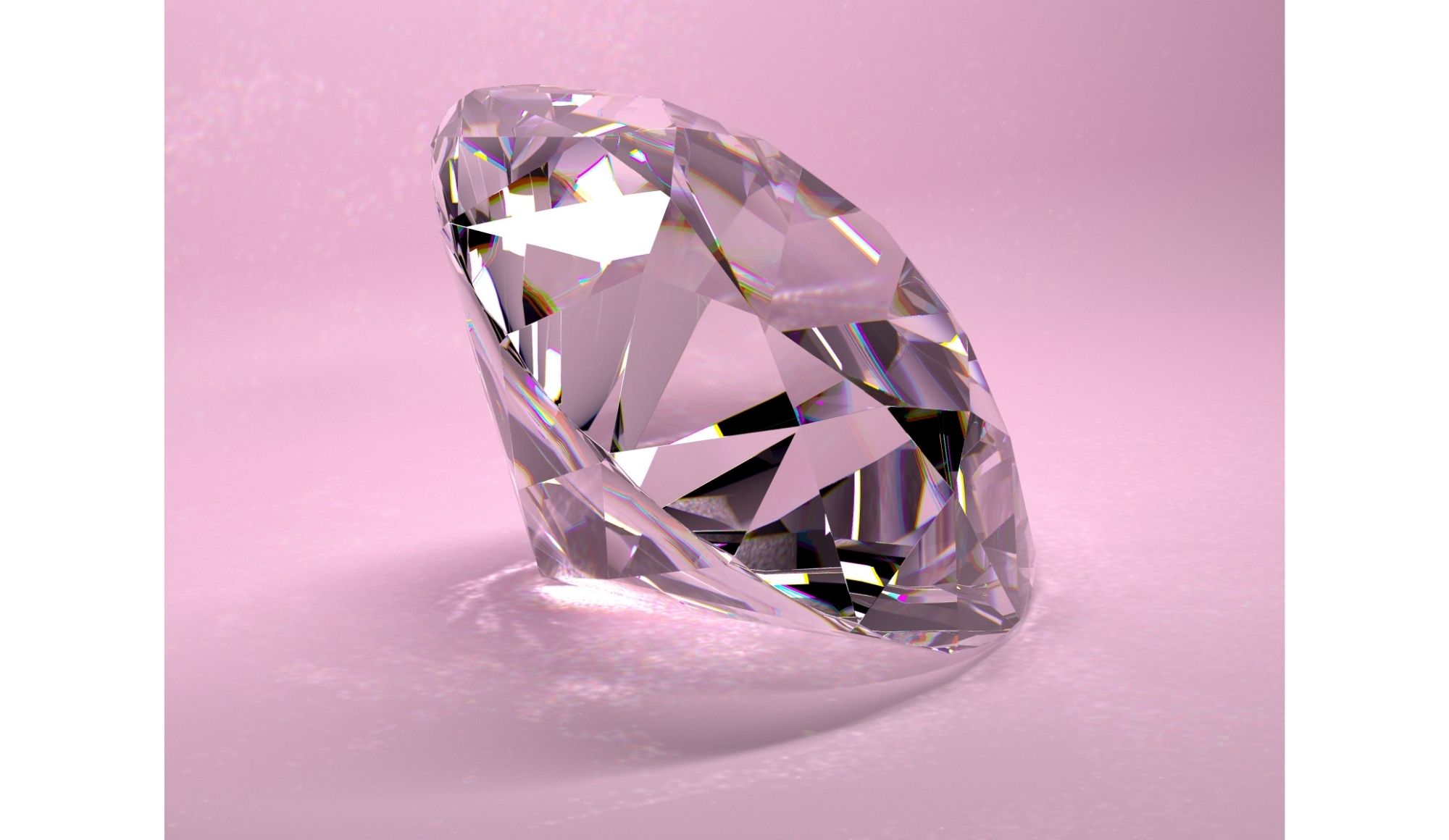A Fast-Growing DIAMOND Stock To Own
The global market for fine jewelry has always been massive, but it got an unexpected boost from COVID-19. In one poll, 30 percent of consumers said they bought more jewelry during the pandemic, and nearly 50 percent said they continued to purchase the same amount they always had.
Perhaps there was more interest in diamonds because travel wasn’t an option, or maybe the rapid economic recovery after the March 2020 market crash created a sense of increased wealth. Regardless, the total market size for jewelry was nearly $250 billion in 2021, and it is still growing. Currently, industry analysts estimate a compound annual growth rate (CAGR) of 8.5 percent through 2030.
Jewelry manufacturers are working hard to push demand even higher by designing ever-more imaginative pieces for both men and women. And it isn’t just the boutique brands that are getting creative; some of the most prominent players in the fine jewelry market are developing new strategies to encourage consumers to buy. Examples of leading companies include:
- Chow Tai Fook
- GRAFF
- H. Stern
- Louis Vuitton SE
- Malabar Gold & Diamonds
- Pandora
- Richemont
- Signet Jewelers Limited
- Swarovski AG
- Tiffany & Co.
Despite their hold on the market, these ten companies and their subsidiary brands aren’t immune to the threat posed by innovators and entrepreneurs. Fine jewelry is ripe for disruption, and Brilliant Earth intends to lead the way.
What does Brilliant Earth do differently? How does it compete in the global jewelry market? And is Brilliant Earth stock a buy?
Conflict Free Diamonds: Beth’s Brilliant Earth Story
Brilliant Earth was founded in 2005, but the Brilliant Earth story began long before that. Electrical engineer Beth Gerstein worked for a satellite communications startup, and she found that the most critical part of the job was solving complex social problems.
Gerstein found her entrepreneurial spirit and decided the best way to gain the necessary technical skills was through the Stanford Graduate School of Business. She met fellow student Eric Grossberg there, and the two had long conversations about how they might create widespread social change.
At the time, Gerstein was in the market for an engagement ring, but she was having trouble finding jewelry with ethically sourced stones. Certainly, there were options for conflict-free diamonds, but the human rights issues behind mining were far more profound than those covered by the Kimberley Process. (The Kimberley Process is a global initiative to manage the trade of rough diamonds and prevent transactions that contribute to the financing of “wars against governments.”)
Grossberg was already familiar with these concerns and looking for solutions to improve diamond miners’ working conditions. The two decided that the best way to solve the many issues in the diamond industry was to start a new type of jewelry company, one that made positive social change the guiding principle behind every business decision.
They launched Brilliant Earth as an e-commerce company and rapidly gained a loyal client base. In the following decade, it became clear that consumers, particularly Millennials and Gen Z, put a high priority on social values.
Both generations tend to choose employers and make purchases based on how companies show up for their local, national, and international communities. Businesses have learned that these consumers are willing to pay a premium to support organizations that align with their ethical standards. That put Brilliant Earth’s Beyond Conflict Free Diamonds in the right place at the right time to connect with a socially-conscious audience.
What Are Beyond Conflict Free Diamonds?
The Kimberley Process ensures that rough diamonds cannot be used to generate funds for wars against governments, but that isn’t the only issue that comes with the diamond mining industry. In many cases, mining harms the environment, and miners regularly face human rights abuses.
Brilliant Earth is committed to conflict-free diamonds that do not finance rebel movements, but the company wants to do more. Beyond Conflict Free Diamonds are sourced in a way that protects against human rights abuses, keeps environmental degradation to a minimum, ensures safe mining practices, and supports community development.
In addition, Brilliant Earth puts a portion of the proceeds from every sale into the Brilliant Earth Foundation – an organization dedicated to giving back.
Are Lab Grown Diamonds Real?
Aside from mining new diamonds, there are various ways to source stones for fine jewelry, and Brilliant Earth is one of a few companies that takes advantage of alternative options. For example, it is possible to purchase pre-owned diamonds from Brilliant Earth, and the company offers a wide selection of lab-grown diamonds.
The obvious question is, of course, are lab-grown diamonds genuine diamonds? The answer is a solid yes.
Lab-grown diamonds are real diamonds, both physically and chemically. They are graded just like mined diamonds based on carat, color, clarity, and cut, and prices work the same way – as the quality increases, so does the cost.
However, lab-grown diamonds are less expensive than traditionally mined diamonds because the cost of mining is astronomical. Usually, that cost is passed along to consumers, which means higher prices.
Brilliant Earth Fourth Quarter and Full Year Financial Results
Brilliant Earth became a publicly-traded company in September 2021. On its first day of trading, it was clear that investors connected with its mission. Brilliant Earth stock opened at $12 per share, and by the time the market closed, it was up 43 percent to $17.16 per share.
Brilliant Earth reported its Q4 and full-year 2021 earnings on March 16, 2022, and the results were, to use the company’s term, outstanding. Highlights include:
Fourth Quarter 2021
- Net Sales: 37.6 percent increase to $121.9 million (as compared to Q4 2020 $88.6 million)
- Total Orders: 41.6 percent increase
- Gross Profit: $62.3 million (as compared to Q4 2020 $41.7 million)
- Gross Profit Margin: 51.1 percent (as compared to Q4 2020 47 percent)
- Net Income: $11.4 million (as compared to Q4 2020 $13.4 million)
- Adjusted Net Income: $10.9 million
- Adjusted EBITDA: $15.9 million (as compared to Q4 2020 $15 million)
Full-Year 2021
- Net Sales: 51 percent increase to $380.2 million (as compared to 2020 $251.8 million)
- Total Orders: 48 percent
- Gross Profit: $187.4 million (as compared to 2020 $112.3 million)
- Gross Profit Margin: 49.3 percent (as compared to 2020 44.6 percent)
- Net income: $26.3 million (as compared to 2020 $21.6 million)
- Adjusted Net Income: $31.9 million
- Adjusted EBITDA: $50.5 million (as compared to 2020 $27.5 million)
Based on these results, a common question is, does Brilliant Earth stock pay dividends? Not yet—and it likely won’t anytime soon. But for many investors, the growth potential offsets the fact that shares do not generate dividend income.
Is Brilliant Earth Stock A Buy?
Brilliant Earth stock prices have dropped around 45 percent since the Brilliant Earth IPO, and the company now has a current market cap of just under $780 million. However, Brilliant Earth stock has a lot of potential, and it is likely to recover and reach new peaks.
Analyst targets range from $20 to $30 per share, with an average of $23 per share. A discounted cash flow forecast analysis reveals a more conservative target of $14.26, which represents a 70.8 percent upside at the time of research. In other words, it appears that Brilliant Earth stock is a buy.



